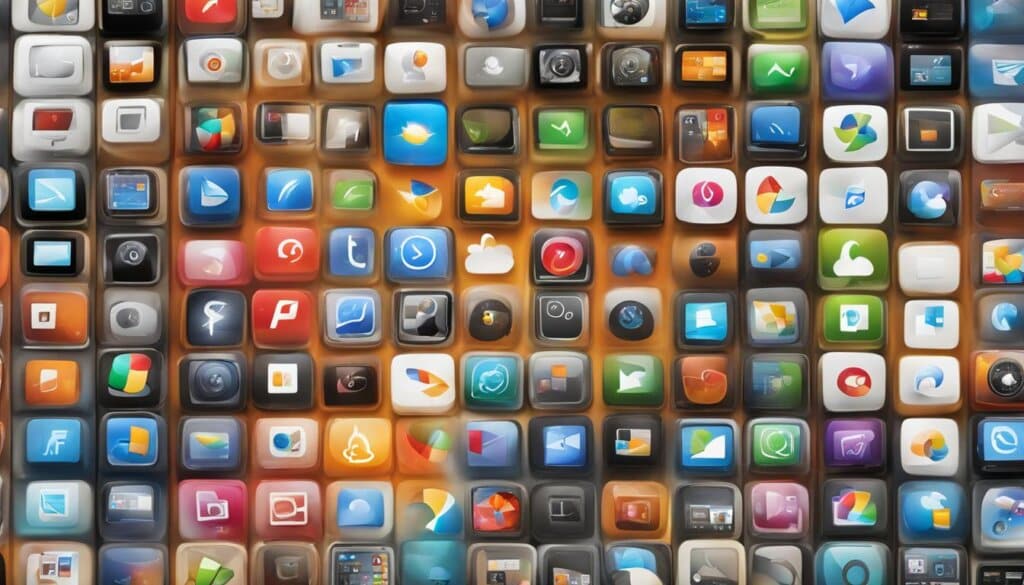Table of Contents
An operating system is the most important software that runs on a computer. It manages the computer’s memory and processes, as well as all of its software and hardware. Without an operating system, a computer is useless.
But what exactly is an operating system? In simple terms, it is a computer program that acts as a bridge between the user and the computer’s hardware. It provides the necessary functionality for computer software to run smoothly and enables users to interact with the computer.
When you turn on your computer, the operating system is the first thing that loads into memory. It takes control of the computer’s resources, such as the CPU, memory, and storage, and ensures that they are allocated correctly to different programs and processes.
Think of the operating system as the conductor of an orchestra, coordinating the actions of various components to create a harmonious performance. It manages the execution of programs, handles input and output operations, and provides a user-friendly interface for you to interact with.
Without an operating system, you wouldn’t be able to open applications, browse the web, or perform any other computer tasks. It is the foundation that enables the functionality we expect from our computers.
The Role of an Operating System
The operating system plays a crucial role in computer management, software, and hardware coordination. It acts as the backbone of a computer, managing all of its software and hardware components effectively.
The primary function of an operating system is to enable multiple computer programs to run simultaneously. By allocating resources such as the central processing unit (CPU), memory, and storage to each program, the operating system ensures smooth and efficient execution of tasks.
Through its coordination abilities, the operating system facilitates communication between various software applications and hardware devices. It establishes a seamless connection between the software and the hardware, allowing them to work together harmoniously.
The operating system also handles the management of system resources, such as file and memory management. It ensures that the computer’s resources are optimally utilized, preventing any conflicts or bottlenecks that may hinder performance.
Additionally, the operating system provides a user-friendly interface that allows users to interact with the computer effortlessly. It can be in the form of a graphical user interface (GUI), where users can navigate through icons, menus, and windows, or a command-line interface (CLI), where users input commands to control the computer.
The role of an operating system is pivotal in creating a stable and efficient computing environment. It acts as a mediator between the software and hardware components, ensuring seamless coordination and optimal resource allocation.
“The operating system serves as the bridge that connects the software and hardware, enabling them to work together in harmony.” – Steve Jobs
Examples of Operating System Functions:
- Allocation of system resources
- Process management
- Memory management
- Device management
- File system management
- Security and access control
| Operating System | Function |
|---|---|
| Windows | Allocation of system resources and process management |
| macOS | Memory management and device management |
| Linux | File system management and security |
Types of Operating Systems
Operating systems play a crucial role in the functionality of computers, and they come in various forms. Let’s explore some of the most popular types of operating systems:
1. Microsoft Windows
Microsoft Windows is the most widely used operating system globally. It has evolved over the years, with different versions catering to diverse user needs. Windows offers a user-friendly graphical user interface (GUI) that allows users to navigate their computers effortlessly.
2. macOS
macOS is the operating system exclusively designed for Apple Mac computers. It is renowned for its sleek and intuitive interface. macOS provides a seamless user experience and integrates seamlessly with other Apple devices.
3. Linux
Linux is an open-source operating system that offers flexibility and customization. It comes in various distributions, each tailored to specific user requirements. Linux is highly regarded for its stability, security, and extensive community support.
Modern operating systems, including Microsoft Windows, macOS, and Linux, utilize a graphical user interface (GUI) as the default means of user interaction. The GUI makes it easier for users to interact with the computer through visual elements like icons, buttons, and menus.
Having explored the different types of operating systems, we can see how Microsoft Windows, macOS, and Linux offer diverse choices to cater to various user preferences and requirements.
Operating Systems for Mobile Devices
Mobile devices such as smartphones and tablets have become an integral part of our daily lives. These devices have unique requirements and demand operating systems that are specifically designed to cater to their functionalities. Two popular mobile operating systems that dominate the market are Apple iOS and Google Android.
Apple iOS is the operating system developed by Apple Inc. It is exclusively used on Apple’s range of iPhones, iPads, and iPod Touch devices. With its sleek design and user-friendly interface, iOS offers a seamless user experience. It allows users to navigate effortlessly through their devices, access a wide range of applications, and enjoy various features such as Apple’s voice assistant, Siri.
On the other hand, Google Android is an open-source operating system used by multiple device manufacturers worldwide. It is known for its flexibility, customizability, and wide range of device options. Android provides users with a vast ecosystem of applications through the Google Play Store and enables seamless integration with Google’s services, such as Google Assistant and Google Maps.
In recent years, the competition between Apple iOS and Google Android has intensified, with each operating system striving to offer cutting-edge features and enhance user experience. This healthy competition has spurred innovation and led to significant advancements in mobile technology.
Both operating systems, while designed for mobile devices, provide users with the ability to perform a variety of tasks. From web browsing and social media engagement to media consumption and gaming, Apple iOS and Google Android cater to the diverse needs and preferences of mobile users.

The significance of mobile operating systems goes beyond personal use. These operating systems provide developers with tools and frameworks to create mobile applications that can reach millions of users worldwide. The availability of a vast user base on iOS and Android enables developers to monetize their applications and expand their reach in the ever-growing mobile market.
As the demand for mobile devices continues to rise, the competition between Apple iOS and Google Android is set to intensify further. With each iteration, these operating systems strive to outdo each other and provide users with enhanced features, increased performance, and improved security.
Table: A Comparison of Apple iOS and Google Android
| Operating System | Apple iOS | Google Android |
|---|---|---|
| Developer | Apple Inc. | Google LLC |
| First Release | June 29, 2007 | September 23, 2008 |
| App Store | Apple App Store | Google Play Store |
| Virtual Assistant | Siri | Google Assistant |
| Customizability | Limited | Extensive |
| Device Range | Apple iPhones, iPads, iPod Touch | Multiple manufacturers and models |
| Updates | Controlled by Apple | Variability across different manufacturers |
While Apple iOS and Google Android have their unique strengths and features, the choice between the two ultimately comes down to personal preference and individual requirements. Both operating systems continue to evolve and adapt to the changing landscape of mobile technology, ensuring that users can stay connected, productive, and entertained on their mobile devices.
Benefits of Using an Operating System
An operating system provides numerous benefits when it comes to software development, hardware management, and user interface.
Standardized Interface for Software Development
One of the key advantages of using an operating system is that it provides a standardized interface for software developers to interact with the underlying hardware. This means that instead of each application having to handle low-level functionalities individually, the operating system takes care of managing hardware resources, memory allocation, and process scheduling, allowing developers to focus on creating efficient and innovative software.
Efficient Hardware Management
Operating systems play a crucial role in managing hardware resources efficiently. They handle device drivers, which enable applications to communicate with various hardware devices seamlessly. With an operating system in place, developers don’t have to worry about the complexities of hardware management, such as device recognition, configuration, and resource allocation. This simplifies the development process and ensures optimal utilization of hardware resources, resulting in enhanced performance and stability.
User-Friendly Interface
Operating systems offer user interfaces (UI) that enable users to interact with the computer system. Whether it’s a command-line interface (CLI) or a graphical user interface (GUI), the operating system provides an intuitive and user-friendly way for individuals to access and use the functionalities of the computer. A GUI, in particular, simplifies the overall user experience by presenting information and controls using icons, buttons, and menus, making the system more accessible and visually appealing.
“Operating systems provide a unified platform for software development, efficient hardware management, and user-friendly interfaces, streamlining processes for developers and enhancing the user experience.”
By harnessing the capabilities of an operating system, developers can focus on creating high-quality software without worrying about low-level hardware details. Additionally, users can easily navigate and interact with their devices through a well-designed and intuitive interface, improving overall productivity and satisfaction.
Functions of an Operating System
An operating system plays vital roles in computer functionality, including user interface (UI), application management, and device management.
User Interface (UI): The user interface is the means by which users interact with a computer system. Operating systems provide different types of interfaces, such as the command-line interface (CLI) and graphical user interface (GUI). A CLI allows users to input commands directly into the computer, while a GUI provides a more user-friendly visual interface with icons, buttons, and menus.
Application Management: An operating system is responsible for managing the launch and execution of applications. It ensures that applications have access to the necessary resources, such as memory and processor time, to operate efficiently. The operating system also provides a platform for developers to create and install applications that integrate seamlessly with the system.
Device Management: Device management involves identifying and configuring hardware devices connected to the computer. The operating system coordinates device drivers, which are software components that allow applications to interact with hardware. By managing devices, the operating system enables applications to access and utilize hardware resources effectively.
“The functions of an operating system, including providing a user interface, managing applications, and handling device management, are crucial in ensuring smooth and efficient computing experiences.”
Comparison of Operating System Functions
| Function | Definition | Examples |
|---|---|---|
| User Interface (UI) | The means by which users interact with a computer system | Command-line interface (CLI), Graphical user interface (GUI) |
| Application Management | Oversight and coordination of application launch and execution | Windows Task Manager, macOS Launchpad |
| Device Management | Identification, configuration, and coordination of hardware devices | Plug and Play system, Android Device Manager |
Different Operating System Types and Examples
Operating systems come in various types, serving different computing needs. One popular type is the general-purpose operating system, which is designed to run on a wide range of hardware and support multiple applications. Examples of general-purpose operating systems include Windows, macOS, Unix, and Linux. These operating systems offer a robust and versatile platform for users to perform a diverse range of computing tasks.
On the other hand, mobile operating systems are specifically designed for mobile devices such as smartphones and tablets. These operating systems have been optimized to support limited computing resources and provide a seamless user experience on smaller screens. Two prominent examples of mobile operating systems are Apple iOS and Google Android. These platforms offer a wide range of apps and services tailored to the unique needs of mobile users.
Each operating system has its own set of advantages and features, catering to the specific requirements of different computing devices. General-purpose operating systems provide a comprehensive suite of functionalities that enable users to perform complex tasks, such as software development, multimedia editing, and gaming. In contrast, mobile operating systems prioritize mobility and offer features like intuitive touch interfaces, mobile app stores, and location-based services.
Understanding the different types of operating systems is crucial in selecting the right platform for your computing needs, whether it is a general-purpose operating system for your desktop or a mobile operating system for your smartphone or tablet.
FAQ
What is an operating system?
An operating system is the most important software that runs on a computer. It manages the computer’s memory and processes, as well as all of its software and hardware. Without an operating system, a computer is useless.
What is the role of an operating system?
The operating system manages all of the software and hardware on the computer. It ensures that multiple computer programs can run simultaneously and have access to the computer’s central processing unit (CPU), memory, and storage. The operating system coordinates the allocation of resources to each program to ensure they run smoothly.
What are the types of operating systems?
There are various types of operating systems, including general-purpose operating systems that run on a wide range of hardware and support multiple applications. Examples of general-purpose operating systems include Windows, macOS, Unix, and Linux. Mobile operating systems are designed specifically for mobile devices and support limited computing resources. Examples of mobile operating systems include Apple iOS and Google Android. Each operating system is tailored to meet the specific needs of different forms of computing devices.
Which operating systems are commonly used on computers?
Operating systems like Microsoft Windows, macOS, and Linux come pre-loaded on most computers. Windows is the most popular operating system globally, with various versions released over the years. macOS is the operating system for Apple Mac computers and is known for its sleek interface. Linux is an open-source operating system with many different distributions. Modern operating systems use a graphical user interface (GUI) that allows users to interact with the computer using icons, buttons, and menus.
What are the commonly used operating systems for mobile devices?
Mobile devices such as smartphones and tablets require operating systems designed specifically for their unique needs. Apple iOS and Google Android are two popular mobile operating systems. These operating systems are not as fully-featured as desktop operating systems but still allow users to perform various tasks like web browsing, media consumption, and gaming.
What are the benefits of using an operating system?
Operating systems bring powerful benefits to computer software and hardware management. They provide a standardized interface for applications to interact with the underlying hardware, reducing the need for every application to handle low-level functionalities. Operating systems also offer user interfaces (UI) for users to interact with the computer, whether through a command-line interface (CLI) or a graphical user interface (GUI).
What are the functions of an operating system?
An operating system performs three essential functions. It provides a user interface (UI) for users to interact with the computer, whether through a command-line interface (CLI) or a graphical user interface (GUI). The operating system also manages the launch and execution of applications, ensuring they have access to the necessary resources. Additionally, the operating system handles device management, identifying and configuring hardware devices and providing applications with access to them through device drivers.













